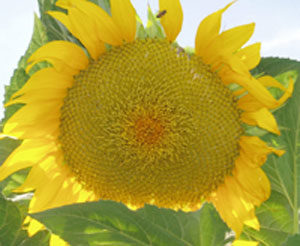Connecting In and Through the Environment
The language of space is very strong because it is analogical—it conveys patterns of similarity and coherence that are deeply visual.
The individual drive for integration and coherence represents a need that is fundamental to human thought and well-being. It helps us make sense of where and who we are—to find our way and to define our ‘self’, to orient ourselves in the world.
The education of children lies in helping them study their ways of making connections. Learning to see and reflect on the patterns in the world around us helps us to recognize scale and boundaries, plan and make decisions.
 We know that the contexts of learning—emotional, aesthetic, and physical—are like learning glue. They influence how learning sticks in the mind. People tend to remember better when the object or idea is put into a meaningful context that reflects their experience.
We know that the contexts of learning—emotional, aesthetic, and physical—are like learning glue. They influence how learning sticks in the mind. People tend to remember better when the object or idea is put into a meaningful context that reflects their experience.
And we know that when the places in which we learn—and are taught—have more meaning to us, we are better able to recall and reintegrate facts and ideas in our minds
Once the tacit experience of patterns and design is made explicit and recognized, our educational practice becomes more conscious. There is elegance and basic understanding to be found in the general patterns that emerge that allow us to appreciate the beauty in the diversity of nature.
Transforming Schools
 Places that are consciously well-designed for human activity and connections satisfy our need for coherent visions, images, perceptions, and concepts.
Places that are consciously well-designed for human activity and connections satisfy our need for coherent visions, images, perceptions, and concepts.
Intentional place-making requires a set of design principles that reflect our abilities to artfully shape public spaces and recognize how those spaces shape us.
Blue Adobe is not intended to become a blueprint to serve as an all- comprehensive educational model. But we do think that making patterns and cycles visible provides lit pathways and stronger connections to our world.
Patterns are everywhere—they are one of our best sources of information about the world. The environment itself is a critical teacher, but we are crippled by the overload of visual stimuli, pushed at us so fast we cannot read it.
One of the best ways to find patterns is to go looking for them with a camera—photography focuses our attentions and enriches our awareness of patterns. Design has content that can be taught—seeing is not a unique talent, but a discipline that can be learned and applied.
To do that, we:
- Design the spaces in our buildings and landscapes to help to string patterns together, develop measures of scale, rhythm, balance, and perspective;
- Integrate the visual arts and spatial technologies to explore patterns;
- teach the language
 of vision—light, shape, texture, movement, lines, similarities, contrasts;
of vision—light, shape, texture, movement, lines, similarities, contrasts; - Develop an understanding of our responsibility for design and the ethic that good design matters;
- Draw deeply from the earth sciences and the pattern languages in the world around us;
- Use technology to see the landscape from a 21st century perspective—satellite images of the earth and sonar views of the ocean floor.
